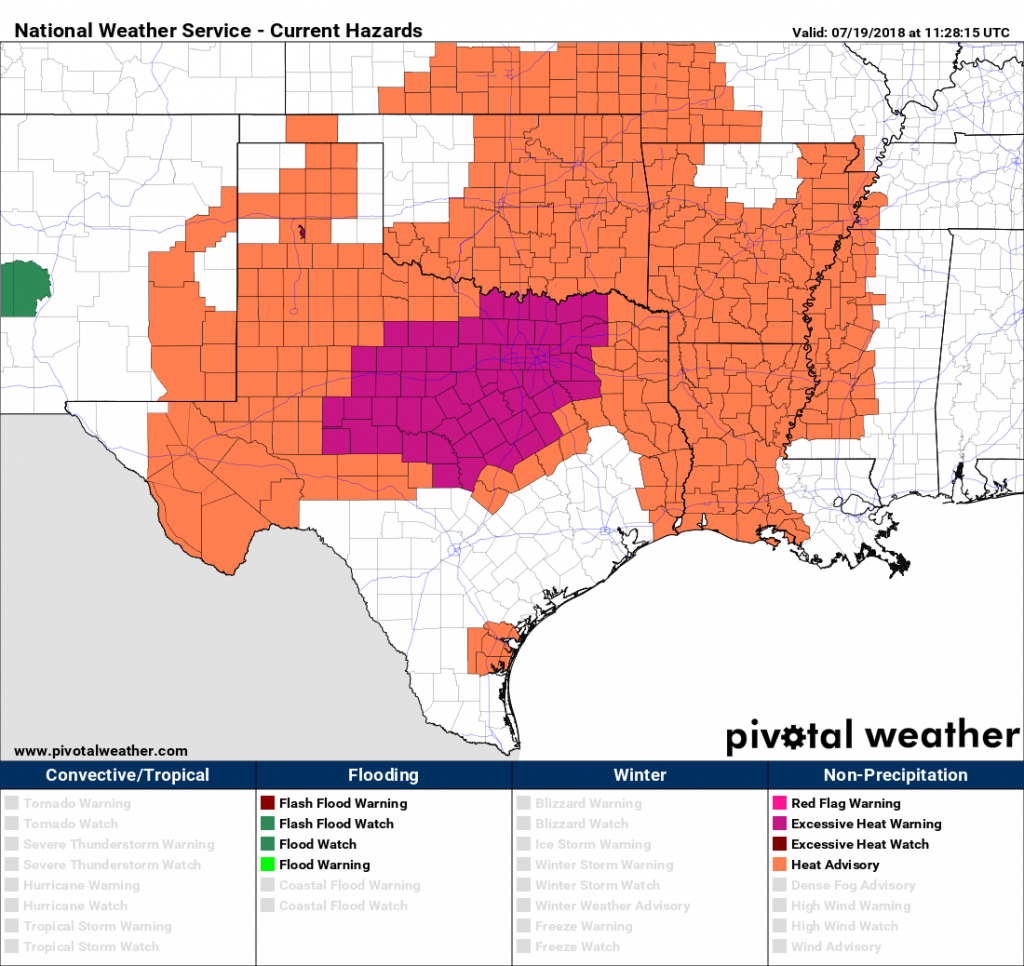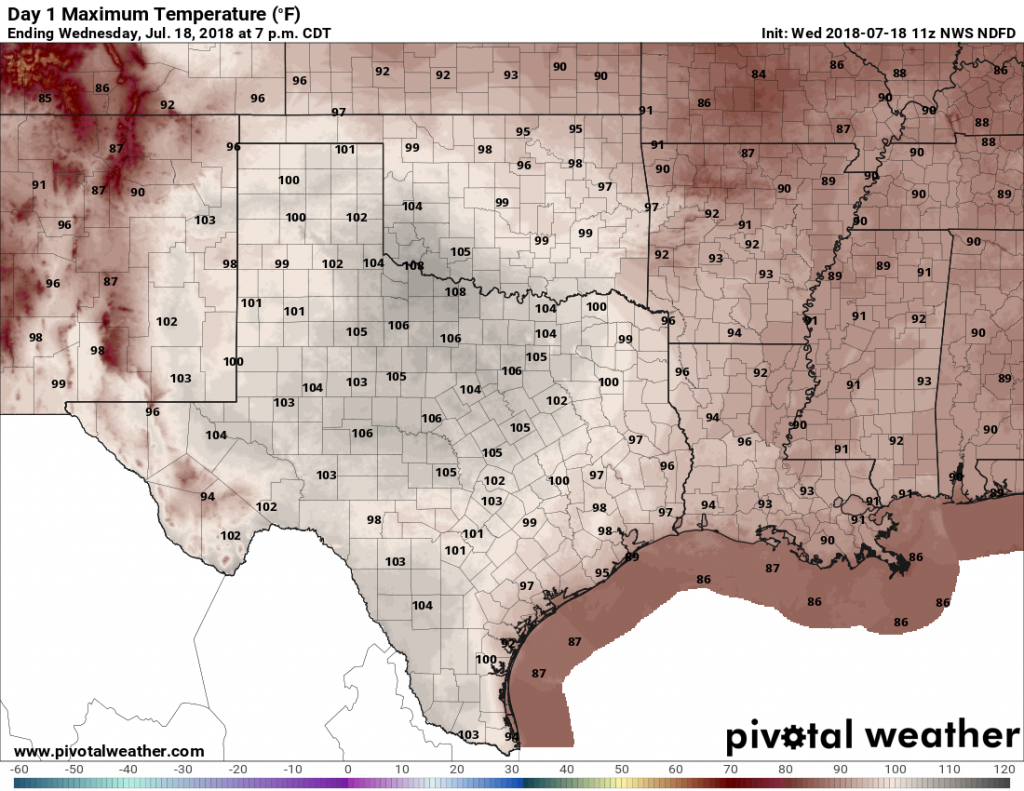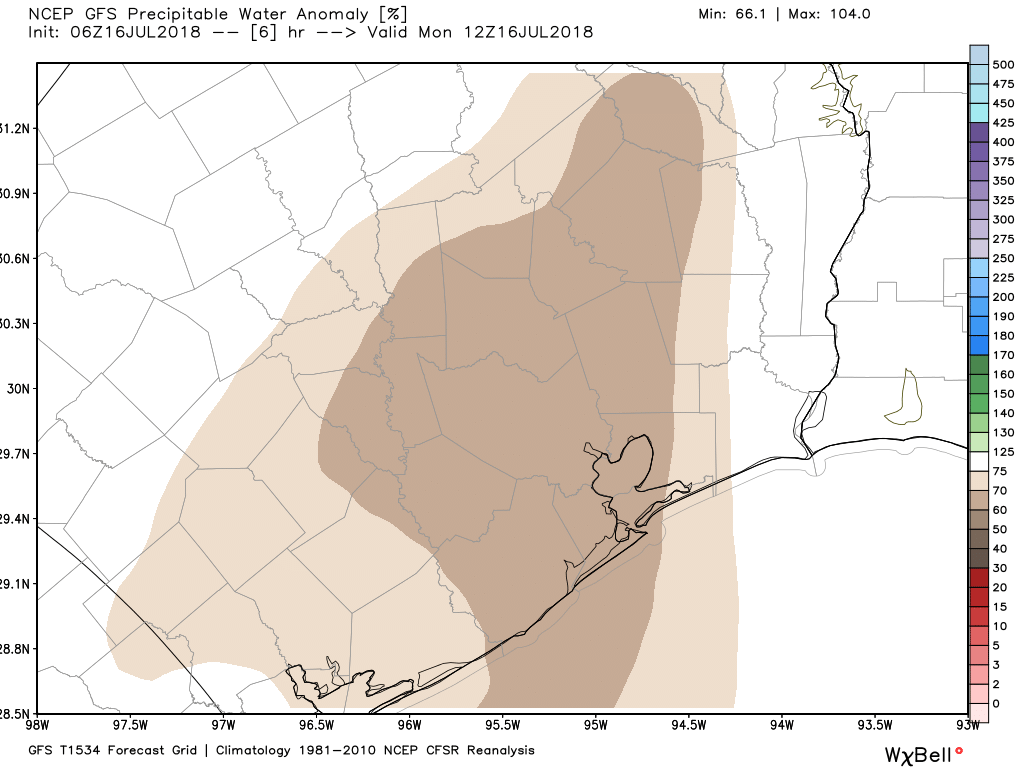We’ve been talking about the heat this week, and upcoming weekend, for quite a while and unfortunately it will be as bad or worse than expected. The heat is especially extreme in the northern half of Texas, where high temperatures may reach 110 degrees, and areas such as Dallas and Fort Worth will see some of the worst heat since 2011. Heat advisories have been issued for the northern half of Texas, as well as some more extreme heat warnings for DFW and surrounding areas.

Additionally, the Electric Reliability Council of Texas, or ERCOT, reported on Wednesday that it set a new, all-time systemwide peak demand record during the afternoon, reaching 72,192 MW between 4 and 5 p.m. Electricity usage will only get higher this weekend as it gets slightly hotter than now, and you can help by conserving electricity (see how at the end of this post).
Thursday
Houston, with its proximity to the Gulf of Mexico, won’t bake quite as much as northern Texas due to high pressures. But it will still be hot and sunny. Expect highs in the upper 90s with lows tonight near 80 degrees.




